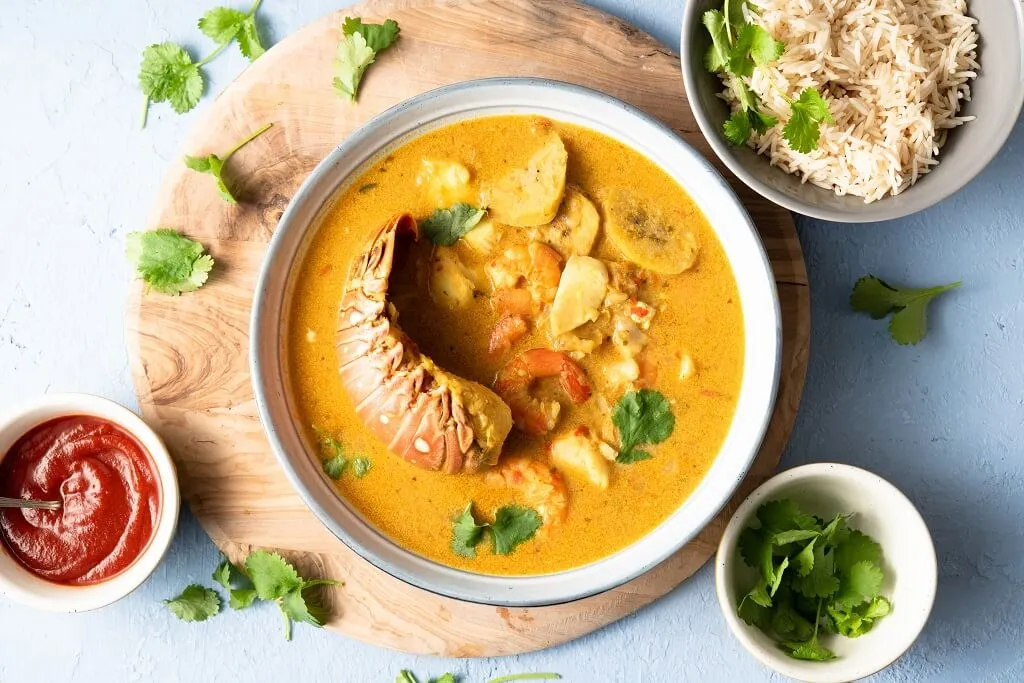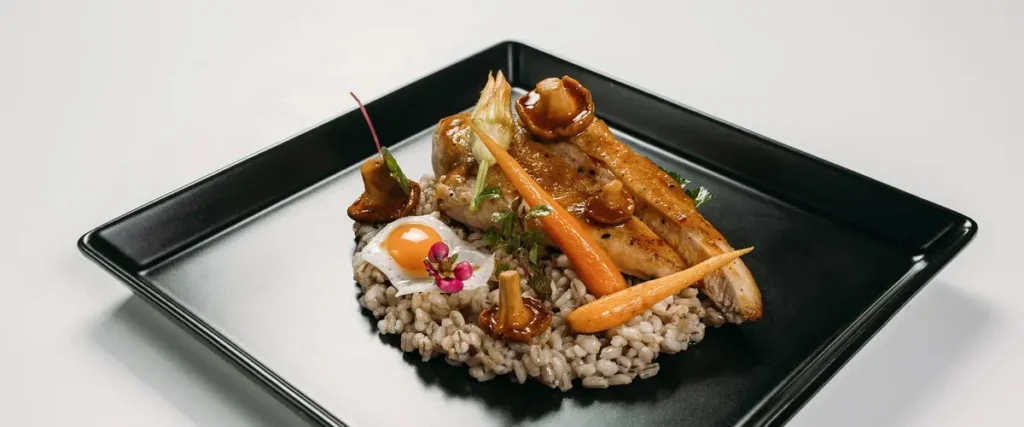Cultural Fusion in Cuisine: In our ever-connected world, culinary traditions from different cultures are blending together to create an exciting and diverse fusion of flavors. The rise of globalization has not only brought us closer together but also had a profound impact on our plates. From the aromatic spices of Indian cuisine to the bold and fiery flavors of Mexican dishes, cultural influences are shaping modern cuisine in ways we never could have anticipated.
Historical background of global influences on cuisine
Culinary fusion is hardly something new – has been occurring for centuries. As old as commercial links and the migration flow are, cultures have been exposed to new ingredients and cooking methodologies. One of the best early examples of such fusion is the Mughal Empire in India. Of Central Asian descent, the Mughals utilized Persian and Turkish flavors, combining them with an already well-developed native cuisine. Some of the most famous fusion dishes that originated with the Mughals were biryani, kebabs of all sorts, and fragrant monhulai curry.
The Age of Discovery is another early influence on the world cuisine in a globalized environment. When Europeans set sail to find new trade routes, they stumbled across new lands constantly – and were always eager to bring back new ingredients. For instance, without tomatoes, potatoes, and chili peppers from the New World, European cuisine cannot be imagined – something new and exciting spurred the development of various dishes.

The impact of immigration on culinary traditions
Immigration also plays a major role in defining culinary traditions. Whenever people move to a new country, they bring their food traditions and when two cultures interact, they create exotic fusions that are different from both of them. This not only helps the immigrants satisfy their hunger for home but also introduces the unique flavor into the host country. One such example is the fusion of Chinese and Mexican cuisine in the United States.
In the early 20th century, Chinese immigrants to Mexico opened restaurants that served a kind of fusion cuisine. For example, the tacos de chino averiados are actually Chinese-style beef tacos cooked with vegetables and soy sauce. African food traditions also affected the European ones. The fusion of African and Creole cuisine in the Caribbean, which was formed during the transatlantic slave trade, is a good example. The African slaves continued to cook and eat traditional food, which merged with Creole to produce foods like jerk chicken, gumbo, and callaloo.
Regional fusion cuisines around the world
Cultural fusion in cuisine does not get limited to specific regions but can be identified around the world. Every distinct region comes with its one-of-a-kind combination of flavors and cooking methods, which results in the creation of numerous fusion cuisines that mirror the varied cultural legacy of the regions. In Southeast Asia, the Peranakan cuisine, as an example, is a blend of the Chinese and Malay recipes using the Chinese noodles and Malay spices and coconut milk to form laksa.
The Lebanese cuisine in the Middle East represents the fusion of the Arab, Ottoman, and Mediterranean beliefs, as demonstrated by tabbouleh, hummus, and shawarma. Lastly, the Peruvian dishes of South America are a fusion of the Spanish, African, and Asian foodstuffs and methods with indigenous ingredients and approaches, making the culinary landscape bright and diverse with ceviche, causa, and lomo saltado.
Popular dishes that showcase cultural fusion
Global cuisine is rich in dishes that embody a unique combination of cultures with their peculiar flavoring. These meals became famous not only in the countries of origin but spread around the world, becoming beloved by millions of foodies. One example of such dishes is sushi burrito, a fusion of Japanese and Mexican dishes native to California. This type of fast food takes two of the most delicious ingredients imaginable-sushi and burritos, on-the-go and is loved by millions.
Kimchi tacos are another great example of cultural fusion. A gourmet delight born on the streets of Los Angeles, this Korean and Mexican fast food became a world-favorite. For a classic taco with its savory filling, kimchi sauce was added, and the combination has drawn the focus of many foodies. A third example of fusion cuisine is Thai pizza. Fresh and spicy cooking of the Thai kitchen blended with a classic pizza’s crispy crust and savory topping – an unexpected but delicious flavor. Although this example focuses on fusion meals based on unfamiliar culture, almost any nation has classic dishes that are the result of culinary exchange.
The role of globalization in shaping modern dishes
Globalization has played a significant role in the spread of cultural fusion in cuisine. As our world becomes more interconnected, ingredients, recipes, and cooking techniques travel across borders with ease, leading to the creation of new and exciting dishes.
The availability of ingredients from different parts of the world has expanded culinary possibilities. Chefs can now experiment with a wide range of flavors and ingredients, resulting in innovative and boundary-pushing dishes. Globalization has also made it easier for people to travel and experience different cuisines firsthand, leading to a greater appreciation for and adoption of fusion cuisine.
Additionally, the rise of social media has contributed to the popularity of fusion dishes. Food bloggers, influencers, and chefs can share their creations with the world, inspiring others to try new flavors and techniques. This digital age has fueled the demand for unique and Instagram-worthy dishes that showcase the beauty of cultural fusion.
The rise of fusion restaurants and chefs
As the demand for fusion cuisine grows, so does the number of restaurants and chefs specializing in this culinary art form. Fusion restaurants can be found in almost every major city, offering diners a chance to experience an exciting blend of flavors.
Chefs who excel in fusion cuisine are celebrated for their ability to create harmonious and unexpected combinations. They draw inspiration from different culinary traditions, blending flavors, techniques, and ingredients in innovative ways. These chefs are at the forefront of culinary innovation, constantly pushing the boundaries of what is possible in the kitchen.

Cultural appropriation vs. cultural appreciation in cuisine
The issue of cultural fusion in the field of cuisine is highly controversial. Although fusion dishes can be seen as relative to various culinary cultures, there is a very thin line between cultural appropriation and cultural appreciation. The former occurs when a dominant culture takes elements from a marginalized one without understanding and respect towards them. When it comes to cuisine, it means taking the traditional dishes of other cultures, commercialising them, and then misrepresenting them in the process on jpslot.
The latter, on the other hand, involves understanding, respect, and due regard for the culture and the historical context behind the dishes being fused. In this regard, it is worth having each chef and consumer study the culture and meaning behind the dishes they serve and eat or where the credit is due.
Embracing diversity through food
Despite the challenges and debates surrounding cultural fusion in cuisine, it is ultimately a celebration of diversity and a testament to our shared humanity. Food has the power to bring people together, transcend borders, and bridge cultural divides.
By embracing fusion cuisine, we not only get to enjoy delicious and innovative dishes but also gain a deeper understanding and appreciation of different cultures. It is through food that we can learn about the histories, traditions, and stories of different communities, fostering empathy, respect, and connection.
The future of cultural fusion in cuisine
Given how interconnected our world is becoming, the future of cultural fusion in our cuisines is indeed bright. The forces driving globalization, immigration, and the cross-pollination of ideas will continue to shape what we consume, leading to exciting delicacies from multiple cuisines.
Nevertheless, it is also crucial to handle fusion in a manner that respects and seeks to appreciate or maintain the original basics of the foods being combined. That way, we can truly pay homage to the richness and diversity of our cuisine heritage, while at the same time welcoming the endless opportunities to blend tastes and prep techniques from across the globe. And with that, we shall continue our mouthwatering tour through the realms of culinary fusion, enjoying the many ways that our foods bind us together and the one thing that unites them all – our common humanity.
Also read: Bigetron PUBG Mobile Esports: Menyulap Impian menjadi Kenyataan




